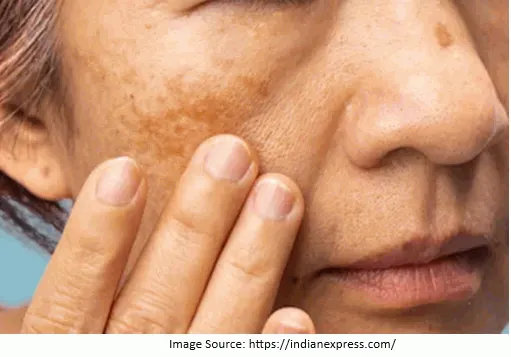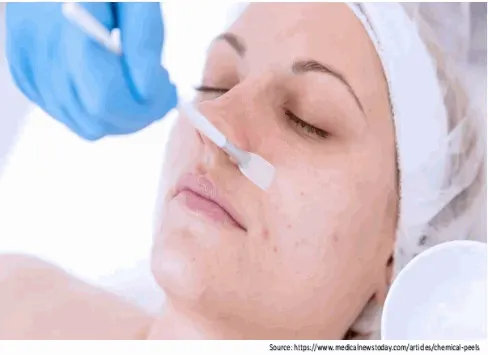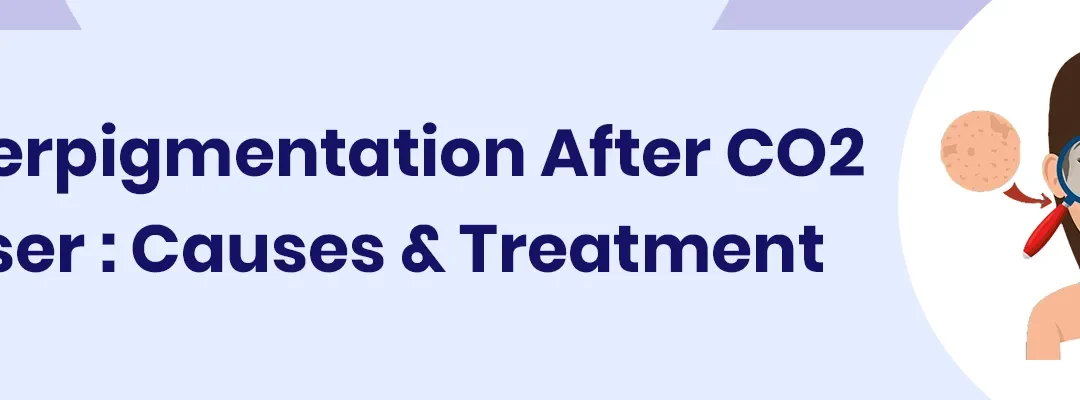Hyperpigmentation is a common concern that may occur after undergoing CO2 laser treatment. This is a common side effect of the procedure, especially in individuals with darker skin tones.
The CO2 laser is a popular cosmetic procedure used for skin resurfacing, scar removal, and treatment of stretch marks.
Hyperpigmentation after CO2 laser treatment can occur due to the skin’s healing process. It can also be caused by sun exposure. So, protecting the skin from sun exposure after CO2 laser treatment is vital.
Prior to undergoing this procedure, it is advisable to engage in a discussion about the potential risks and side effects with a qualified dermatologist in India, such as Dr. Archit Aggarwal, who can provide expert guidance and personalized care.

Dr. ArchitAggarwal, one of the best dermatologist in Faridabad, can assess the condition and recommend appropriate treatments. With his expertise and commitment to patient care, he aims to deliver excellent results and help patients regain their confidence.
Dr. ArchitAggarwal is renowned for providing exceptional pigmentation treatment in Faridabad. As the founder of KDC Clinic, a reputable hair and skin clinic in Faridabad, Dr. Aggarwal has extensive experience addressing various skin concerns, including hyperpigmentation after CO2 laser treatments.
Dr. Aggarwal advises his patients on effective strategies to avoid this complication. In the rare instances when hyperpigmentation occurs after CO2 laser treatment, Dr. Aggarwal offers effective solutions. He understands that post-inflammatory hyperpigmentation after CO2 laser can be distressing, and he tailors his treatments to address this specific concern.
In this blog, we will explore CO2 laser treatment, the possibility of hyperpigmentation occurring afterward, prevention methods, treatment options, and post-treatment care.

Understanding CO2 Laser Treatment
CO2 laser treatment is a skin resurfacing procedure that uses a carbon dioxide laser to remove layers of damaged skin. This laser emits a wavelength specifically absorbed by water in the skin cells. When the laser is applied to the targeted area, it creates controlled damage to the skin, prompting the body’s natural healing process.
In addition to this, CO2 laser treatment is effective in addressing post-inflammatory hyperpigmentation, a condition characterized by darkened spots or patches of skin that develop after inflammation or injury. It emits short pulses of high-energy light, which vaporize the targeted skin cells and stimulate collagen production. CO2 laser treatment is known for addressing a wide range of skin concerns. As the skin heals, old, damaged cells are replaced by new, healthy cells, improving texture and tone.
Can Hyperpigmentation Occur After CO2 Laser Treatment?
While CO2 laser treatment is generally safe and effective, hyperpigmentation can occur post-treatment. The risk of post-inflammatory hyperpigmentation after CO2 laser depends on several factors, including the individual’s skin type, the intensity of the laser treatment, and pre-existing pigmentation issues.
How To Avoid Hyperpigmentation After CO2 Laser?
There are several things you can do to prevent CO2 laser post-inflammatory hyperpigmentation:
- Sun protection: Avoid sun exposure and use broad-spectrum sunscreen with at least SPF 30 to protect the skin from UV damage.
- Topical lightening agents: Apply topical lightening agents such as hydroquinone, kojic acid, or azelaic acid to the treated area to help lighten any pigmentation that may occur.
- Avoid certain skincare products: For at least two weeks following the treatment, avoid applying products containing exfoliants or alpha-hydroxy acids to the treated region.
- Follow post-treatment care instructions: Follow your doctor’s instructions carefully, including avoiding picking or scratching the treated area and avoiding heat and sweating for the first few days after the procedure.
- Consult your doctor: Speak to your doctor if you notice any signs of CO2 laser post-inflammatory hyperpigmentation or have concerns about your healing process.
Now, let’s see,
Types of Hyperpigmentation and Their Causes
Different types of hyperpigmentation may occur after CO2 laser treatment. These include:
1. Post-inflammatory Hyperpigmentation (PIH):

PIH develops in response to skin inflammation or damage. It may result from extensive sun exposure, skin damage, or laser treatment.
2. Melasma:

It is a type of hyperpigmentation triggered by hormonal changes during pregnancy or using contraceptives. The heat generated during the CO2 laser treatment can exacerbate melasma.
3. Solar Lentigines:
Also known as sunspots or age spots, solar lentigines appear as flat, dark spots on areas exposed to the sun, such as the face, hands, and shoulders.

Treatment Options for Hyperpigmentation After CO2 Laser
If hyperpigmentation occurs after CO2 laser, there are several treatment options available, such as:
1. Topical Treatments:
Dermatologists may prescribe topical creams or ointments that contain ingredients such as hydroquinone, retinoids, kojic acid, or azelaic acid. These products work by inhibiting melanin production and lightening the darkened areas of the skin. Following the dermatologist’s instructions and using these products consistently is essential to achieve optimal results.
2. Chemical Peels:

It involves applying a chemical solution to the skin, which exfoliates the outer layers and promotes cell turnover.
Superficial or medium-depth peels containing ingredients like glycolic acid, salicylic acid, or trichloroacetic acid (TCA) can help reduce hyperpigmentation by removing damaged skin cells and stimulating new cell growth.
3. Q-switched Nd: YAG laser:
This non-ablative laser uses high-energy light to target and break down the excess melanin in the skin. It is often used to treat age spots, freckles, and other types of hyperpigmentation. Unlike the CO2 laser, the Nd: YAG laser does not cause damage to the skin, making it a safer option for individuals with darker skin tones.
Understanding Pigment Re-Occurrence
It is important to note that hyperpigmentation can sometimes reoccur even after successful treatment. This can happen due to various factors, including excessive sun exposure, hormonal changes, genetic predisposition, or inadequate post-treatment care.
To minimize the risk of pigment re-occurrence, protecting your skin from the sun’s harmful UV rays is crucial by wearing sunscreen with a high SPF, avoiding direct sunlight during peak hours, and wearing protective clothing.
Post-Treatment Care
To minimize the risk of hyperpigmentation after CO2 laser treatment and maintain optimal results, you should follow the below instructions:
- Keep the treated area clean and dry.
- Apply ointment or moisturizer as directed.
- Apply sunscreen to protect the treated area from sun exposure.
- Avoid picking or scratching at the treated area.
- Avoid exposure to heat or cold for a few days.
- Avoid strenuous activities for a few days.
You may experience some redness, swelling, and discomfort in the treated area, which should improve over time. Consult your doctor if you experience any unusual symptoms or complications.
Your doctor may prescribe medication to help manage these symptoms. Following your doctor’s instructions will ensure the best possible outcome and minimize the risk of complications.
You should consult an experienced dermatologist like Dr. ArchitAggarwal for personalized advice and treatment options regarding hyperpigmentation after CO2 laser treatment. He is proficient in providing excellent treatments for hyperpigmentation, with zero to negligible side effects.
Frequently Asked Questions
Q. Is hyperpigmentation after CO2 laser permanent?
A. Hyperpigmentation after CO2 laser treatment is usually temporary and will gradually fade over time. However, in some cases, it may take several months for the pigmentation to resolve completely.
Following post-treatment care instructions and protecting your skin from sun exposure is essential to promote faster healing and minimize the duration of hyperpigmentation.
Q. Can hyperpigmentation occur in all skin types after CO2 laser?
A. Hyperpigmentation can occur in individuals of all skin types after CO2 laser treatment. However, individuals with darker skin tones (Fitzpatrick skin types IV-V) are generally at a higher risk.
Their skin naturally produces more melanin, which can react to the laser treatment, resulting in post-inflammatory hyperpigmentation. Individuals with darker skin tones must take extra precautions and follow post-treatment care instructions closely.
Q. Are there any specific skincare products that can help with hyperpigmentation after CO2 laser?
A. Dermatologists may recommend specific skincare products to aid in fading hyperpigmentation after CO2 laser. These products often contain hydroquinone, retinoids, vitamin C, or azelaic acid, which can help reduce pigmentation and promote skin renewal.
Q. Can hyperpigmentation recur after treatment?
A. Yes, hyperpigmentation can recur after treatment. It is essential to take preventive measures, such as sun protection and following proper aftercare instructions, to minimize the risk of recurrence. In some cases, maintenance treatments may be necessary to maintain results.
Q. Can hyperpigmentation occur even if I follow all the post-treatment instructions?
A. While following post-treatment instructions can significantly reduce the risk of hyperpigmentation, it is still possible for it to occur due to various factors such as sun exposure, skin type, and underlying medical conditions.

